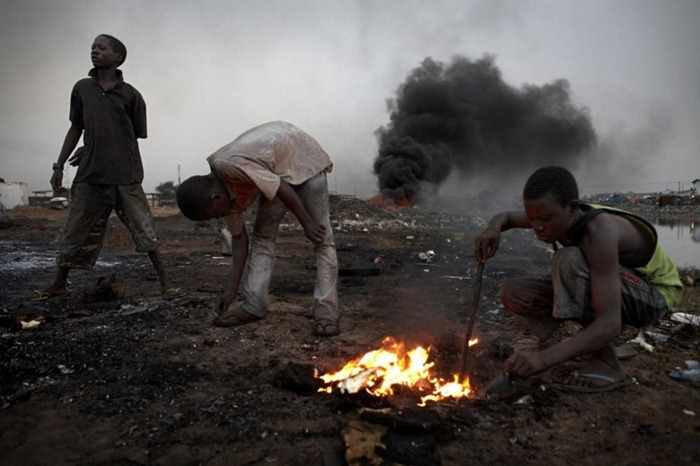Where does electronic waste generated by the first world countries end up in? Ghana, and many of the third world countries like China, Nigeria, India, Vietnam and Pakistan – but mostly Ghana. With hundreds of millions of tons of waste shipped each year, Ghana’s illegal e-waste trade is shaping up as an economy of its own.
The Agbogbloshie dump in Accra, Ghana, is the largest electronic wasteland in West Africa. The locals call it Sodom and Gomorrah. About 3000 people work in Accra and making a living by selling scavenged metal from electronic equipment. Old TVs, computer monitors, hard drives and keyboards are dissected for any reusable parts like lenses from the disc drives and circuit boards, and with global scrap prices soaring, metals are in high demand. Wires and printed boards are burnt to extract copper and other precious metal.
But the process to retrieve usable metals is extremely toxic. Workers who remove the metals often have no protective equipment and breathe in high levels of toxic chemicals, which are then released into the atmosphere. Toxins such as lead, cadmium and mercury are burnt in Ghana, with concentrations that exceed the normal values up to 100 times.
"It's the only part of the world where you'll go and see thousands of women on any given day that are sitting ... basically cooking printed circuit boards," says Jim Puckett, the executive director of the Basel Action Network, which works to keep toxic waste out of the environment. "As a result, they're breathing all of the brominated flame retardants and the lead and tin that are being heated up. You smell it in the air. You get headaches as soon as you enter this area. It really is quite sad."

Sources: NPR, Ghanaweb. Photos: Andrew McConnell
























Welcome to hell
ReplyDelete